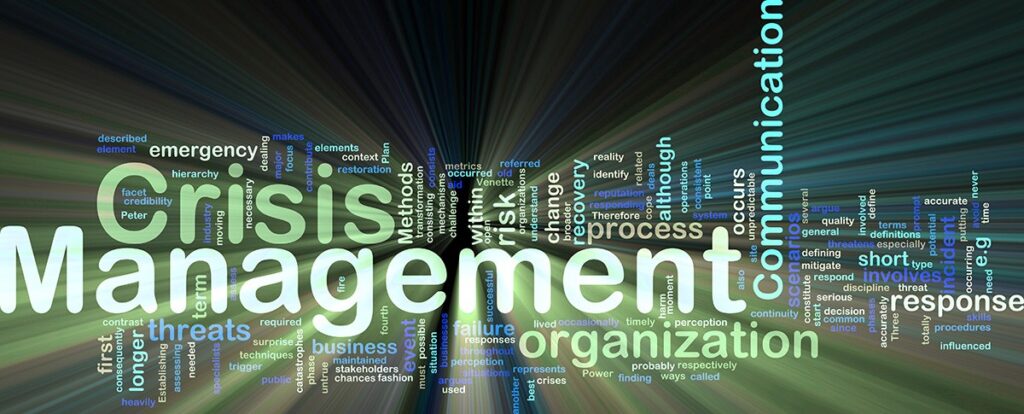
During the occurrence of an emergency the actions to be taken in the first minutes are critical for a Business/Organization. Early warning of employees or visitors to evacuate, seek safe shelter or stay in their premises can save lives.
A call for assistance to emergency management or Civil Protection services will assist the Agency in handling each case appropriately. Even someone properly trained in First Aid or performing CPR can prove to be a lifesaver. While a properly trained team of employees, with knowledge of building infrastructure operating procedures and systems, can help control a situation and minimize damage to the facility and the environment.
Crisis Planning and Management
The plan, the management and the resolution of any emergency incident should be recorded and specified in an Emergency Plan.
Every Business or Organization that employs many people and has as part of its normal activity the large number of visitors, customers, whether patients for hospitals, or students for University Institutions, etc., should have a Emergency Crisis Plan which should be implemented by qualified and trained individuals in any emergency.
Of course, the larger and more important or critical the facility, and the larger the number of employees, visitors, customers, patients, or students, the more complex the plan should be.
This design can also be described as Emergency Safety Plan. Such a plan shall specify, assign and indicate to the officials responsible for its implementation and shall specify in detail the procedures to be carried out during various emergencies or disturbances in the operation of the Company or the Organization. This plan is essentially a clear policy statement about the Company or Agency's commitment to all security issues.
The Company or Organization should design and develop separate strategies specific to the nature of any incident. These plans may include, for example, a disaster plan and a fire safety plan.
The plan will be developed to prioritize the following objectives:
- The protection and rescue of lives,
- Minimizing injuries,
- Asset protection
- Minimizing liability in case of downtime
Following these considerations, the plan should provide for remedial procedures.
Once a crisis or emergency occurs, the two key elements of the plan are,
What to do and who should do it!
Effective crisis management requires those who handle them to take into account the impact of events as widely as possible.
The responsible operator must be able to see the "bigger picture" of a situation when shaping and forming control systems and groups, he must take into account the wider and long-term consequences of the crisis.
Otherwise an emergency can turn into a long-term crisis.

